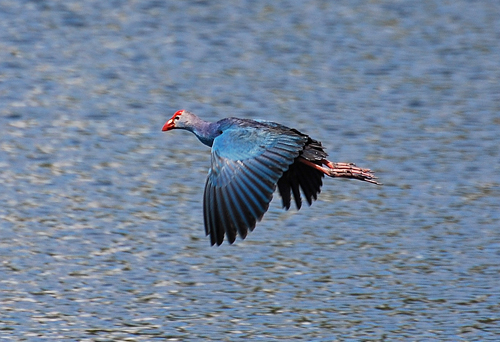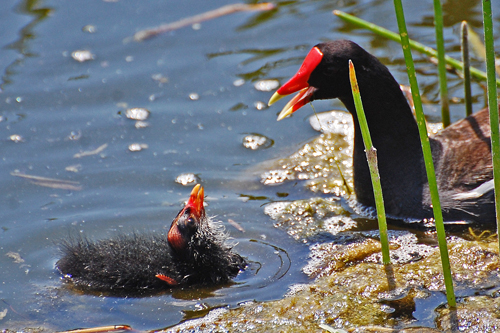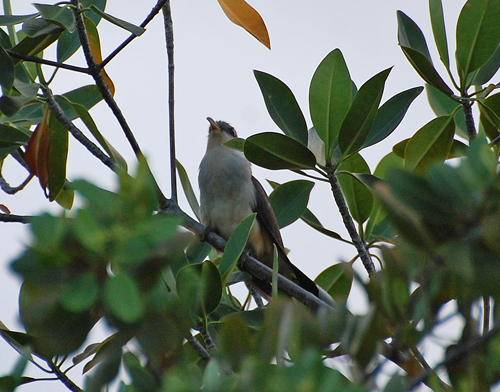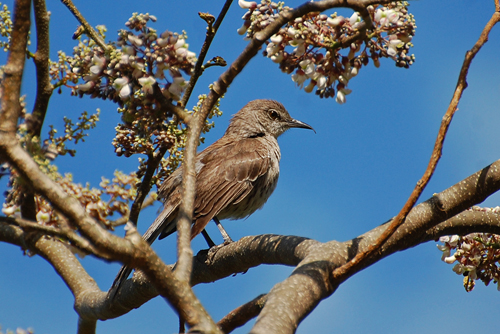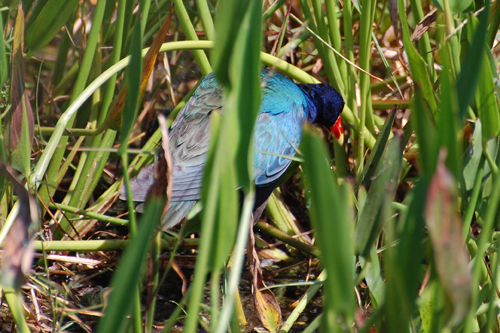On the evening of May 24 and again on the evening of May 25 I heard and was able to identify by hearing one, and possibly two, Buff-collared Nightjars (ABA Code 3) at the base of the entrance to Madera Canyon near dispersed campsite number 1. From 7:45 until at least 8:00 p.m. the bird(s) called repeatedly from the hillside just south of Proctor Road. I was not able to see the bird, or at least if I did see it briefly in low-flight, I was unable to identify it other than by song. The song, however, is unique and distinctive and I will add it to my North American Life List as number 728. It joins the Black Rail as one of my two “heard only” birds. Close enough.
Early in the morning of May 25 I was on the Anza Trail near Tubac in a second effort to locate the Sinaloa Wren (currently an ABA Code 5, but I am betting it moves to Code 4 based on the frequency with which it is being seen in the past two years) that had been seen there throughout much of the spring, but had not been reported in recent days. My patience sitting for about 2 hours on a fallen tree trunk near the power line cut on the trail was ultimately rewarded by a fabulous view of the wren as it fluttered up from the underbrush within a few feet of me in pursuit of a small moth or butterfly. Although there is a possibility that the bird I saw was a Bewick’s wren, I am satisfied that it was the Sinaloa Wren because of the brightness of the brown coloration and the eye-stripe, both of which appeared to me to be more extensive than what I have seen on Bewick’s Wrens (of the southwest eremophilus race, or subspecies), and finally, of course, the location. There was no “tail-wagging” behavior. The bird was silent so I did not have the advantage of that in making my identification. I am certain enough to include it as 729 on my Life List.
Later that week I went to Washington State for several purposes, one of which was to try to find a Sooty Grouse. If seen, this would reduce my unseen ABA Code 4s to 7, but in spite of hours spent on and near Hurricane Ridge in the Olympics, I neither heard nor saw a Sooty Grouse. This bird is becoming my number 1 nemesis bird. If anyone reading this blog knows where I can find them, let me know.
If it seems from this report that I must get bored spending so much time not finding the birds I am looking for, that would be far from the truth. It is pure pleasure to spend hours in pristine areas enjoying the sights, sounds and feelings of the natural world. That alone is sufficient reward for the effort involved. A welcome bonus is the occasional exchange of greetings and thoughts with folks, such as Carol on the Anza trail, who share my love of nature.

